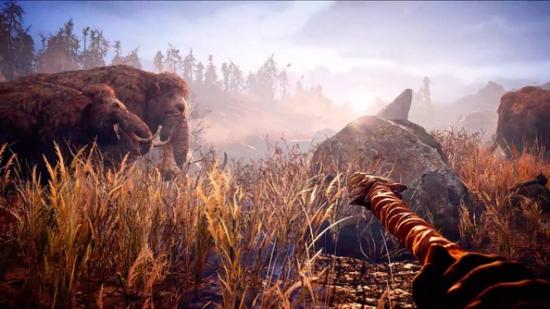Here’s what it is: I’ve played the first three hours of Far Cry Primal, and I’m neither sold on it nor ready to condemn it. The reason I’m feeling conflicted is that much of the allure of its prehistoric premise – to me at least – comes from the idea that it’ll shake up the Far Cry formula in tangible ways. It’s a time and place games haven’t explored much, and that’s intrinsically fascinating. Mammoths, for crying out loud! Prototypical indoeuropean languages! Brutal melee takedowns with rudimentary clubs!
Hate corridors? Check out our best PC sandbox games.
But simultaneously, its mechanics and systems are extremely familiar to anyone who’s been keeping up with the series so far. Or, indeed, anyone who’s ever played a Ubisoft open world game. I’m not going to call it a re-skin, because that’d be premature and I’d be glossing over entire systems such as animal taming and owl binoculars that Ubisoft Montreal have built. Instead I’m going to work through the tropes that have come to define the Ubisoft open world game and consider how closely Far Cry Primal adheres to them.
The Ubisoft formula, as I’m calling it, has created some fantastic games in recent years, there’s no doubt about that. But it’s also in danger of providing diminishing returns with each subsequent time it’s deployed. So, how Ubisoft is Far Cry Primal?
Towers that unlock more of the world map – Yep
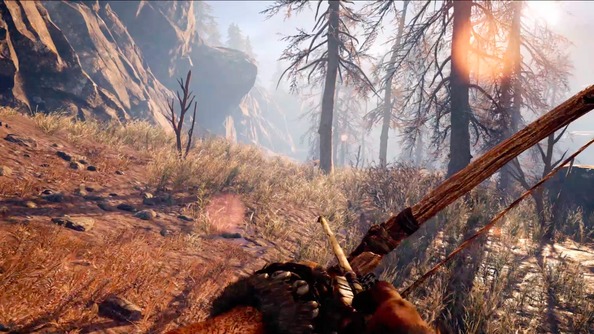
This is the design trope that Ubisoft’s various studios have deployed to the point of parody in recent years – you find some sort of tower, interact with it (usually by climbing) and you’re rewarded by a previously greyed-out section of world map coming alive with colour and new things to do and collect. Like a lost toddler wandering the aisles of a supermarket, the mechanic even somehow found its way into The Crew – a driving game – in 2014.
Bonfires fill that quota in Far Cry Primal. Admittedly they’re a departure from the norm in terms of their architecture, standing only a few feet higher than Takkar himself. You don’t have to climb them, either. Instead you just light them up with a flaming club to initiate the familiar spinning camera cutscene with a bird flying around overhead to let you know in no uncertain terms that you’re playing A Ubisoft Game.
Massive systemic open world – Yep
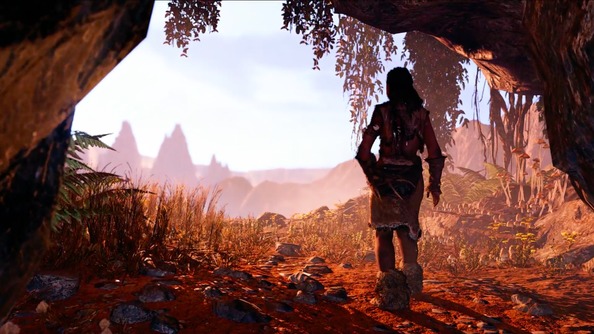
I mean, of course. It won’t surprise anyone that Primal takes place on a great big world map full of human and wildlife AI who interact violently whenever you’re around to see it. Or indeed that the great big world map features primary and side missions (hunting diversions return, for example) intended to give you the sense of colonising a wild environment. In this case player-character Takkar is creating a new home for the displaced Wenja tribe among violent rival factions and vicious natural predators, by gathering resources and building up a settlement.
“In Far Cry we always try to identify a frontier in the world,” game director Thomas Simon tells me. “A place where you’re in a grey zone, where the laws that you’re used to do not apply. The ice age is really the first time man started to settle, so that’s the origin of the conflict.”
This is an aspect in which Far Cry Primal makes good on its promise. It does make sense to be a frontiersman in this environment, skinning animals and crafting things from slate and wood. Perhaps more sense than it did in Far Cry 3, actually.
Charismatic adversary who’s very into philosophy and male grooming – No
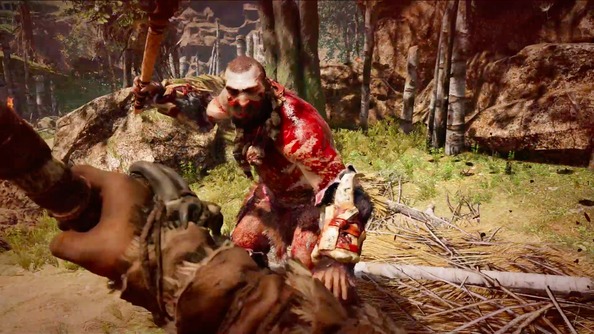
Vaas Montenegro and Pagan Min, the chief antagonists of Far Cries 3 and 4 respectively, have a lot in common. Both take value hair care more highly than the sanctity of human life, both love to rationalise their barbaric acts to you in high-minded speeches while you’re incapacitated, and both were among the best things in their games. It’s really more of a Far Cry thing than a broader Ubisoft trope, but still an element worth identifying.
If such a character exists in Primal, I didn’t meet them in the first three hours. I did meet a very aggressive woman in blue body paint who leads the Izila tribe, but she’s a lady of few words and fewer hair care tips. I’d be surprised if Ubi Montreal were hiding such an adversary away, so can only conclude that Primal deviates from the formula on this front.
Hallucinogenic sequence – Yep
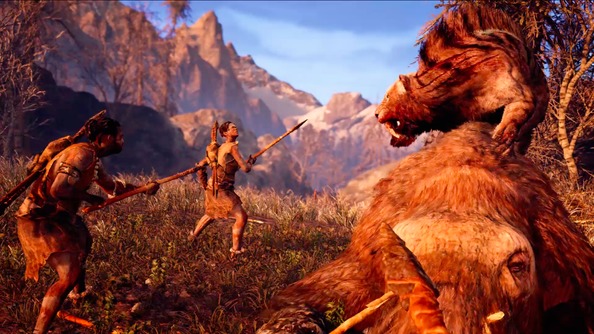
Hey, remember that bit in Far Cry 3 when you’re walking through a cave and your vision goes a bit blurry, so you look at your own hands for a bit and then start wandering through a path of birds and animals while a disembodied voice speaks vaguely about being at one with beasts? Sorry, remember that bit in Far Cry Primal when all that happens? Oh, you don’t, because you haven’t played it yet and the whole point of this article is for me to tell you about it? I guess I didn’t think this device through.
It is striking how similarly Primal’s initial hallucination sequence plays out to Ubisoft’s previous works, though. Perhaps Ubi Montreal see these tripping scenes as an absolutely crucial pillar of the franchise. Perhaps they’re stuck for ideas. Whatever the rationale, it’s moments like this that considerably dampen my enthusiasm for Primal.
An annoying/dislikeable protagonist – No
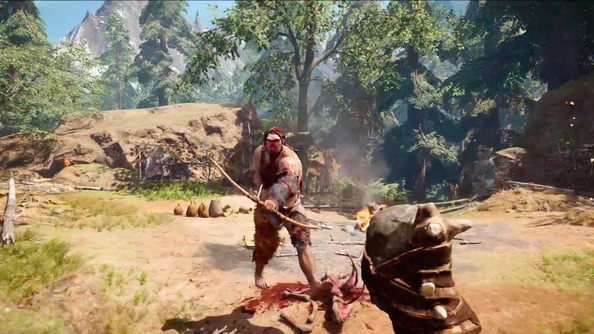
You could make a compelling argument that the disagreeable nature of player-characters of Assassins Creed and Far Cry games over the years is a brave and admirable decision on Ubisoft’s part. Jason Brody can be interpreted as a parody of traditional shooter protagonists, and his vapid demeanour is actually crucial to the game’s story. Desmond, Ezio, Altair, Edward and their hood-donning contemporaries also have good reason to be terse, and their grey morality adds something to their narratives. But would you invite any of them over to your place for pulled pork and home-brewed cider? Forget it.
Takkar, though, is a more sympathetic character. He’s really just trying to make a habitable corner of the world for he and his displaced tribespeople. He’s killing quite a lot of men in order to do so, but who wasn’t in 10,000BC? At least the guy is at one with nature, able to tame animals by throwing meat at them and then approaching slowly to, er… take them captive and use them for his own ends. Tagging enemies by performing an owl flyover, riding a mammoth about, and sending in a wolf to maul enemy tribesmen are all feats within Takkar’s grasp.
Collectibles absolutely everywhere – Yep
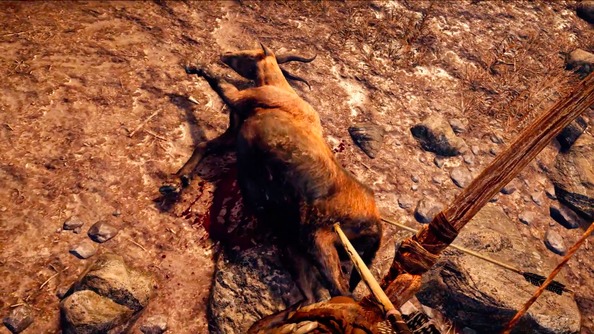
You know the drill – an environmental design team builds a huge explorable area filled with pretty waterfalls and beautiful vistas, then someone turns up with an enormous bin bag labelled ‘content’ and empties it all over that huge explorable area. It’s then your job as environment janitor to sweep the land clean of this ‘content,’ chasing after all manner of multi-coloured bobbins in the name of completion. Some of those bobbins are used to upgrade your gear, while others exist for their own sake. Thought you were nearly done with the game? Well, you just picked up trinket 1 of 100, sucker. Good luck with the others.
Primal revealed its adherence to this quintessential Ubi trope to me as I was swimming around in a small lake and noticed an unusual icon on the mini-map (yes, my Stone Age mini map). Diving down to its floor, I found a rock with a white hand painted on it, picked it up, and received the following message: “Daysha Hand: 1/100.”
Resources appear in familiar forms, too. I see red, blue, and yellow flowers dotted around, waiting to be plucked and turned into some form of medicine. Rocks, trees and wildlife are similarly primed to be gathered into your primeval sack and turned into something that’ll help you kill things with greater ease. And they’re all clearly visible when you enter…
That vision mode – Yep
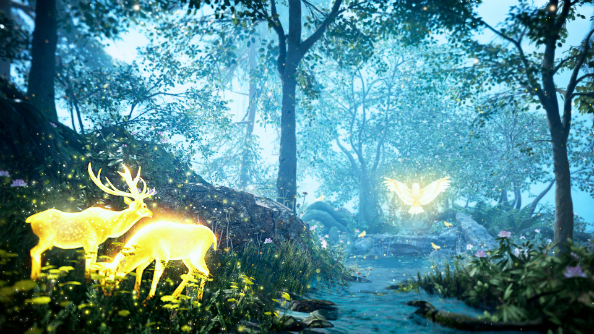
A trope that isn’t exclusive to Ubisoft’s stable but historically originates from it (Splinter Cell: Chaos Theory, since you ask), this refers to pressing a button to make everything go black and white, enemies appear in red, and interactive stuff glow yellow. In Primal it’s known as Hunter Sense, because Takkar has a unique bond with the flora and fauna around him.
There’s a new spin on the usual enemy-tagging scouting run one might perform using this mode, though: Takkar quite often gets an owl to do it for him. One of his tamed pets, the nocturnal avian is deployed to perform a flyover and tag upcoming foes before T-Man moves forwards. This, along with ordering predatory mammals to savage your foes, is one of Primal’s most distinctive gameplay additions.
Verdict – It’s definitely a Ubisoft game
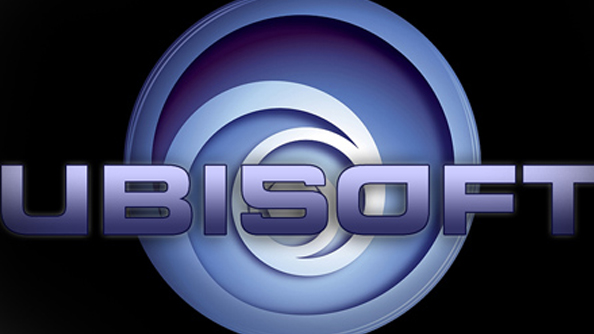
I asked game director Thomas Simon if the team were concerned that people might pick up Primal, recognise so many returning tropes and mechanics and dismiss it as more of the same. “I think we brought a lot of new mechanics in Far Cry Primal,” he says, “around crafting, survival, taming animals, and beast riding.
“Allowing you to ride a sabre tooth, the fact that you have to build your village, this really brings a fresh point of view and a fresh experience on the Far Cry gameplay.
“At the same time Primal’s DNA is Far Cry and I’m proud of it. Because it comes with a lot of great moments, like a surprising world, those are roots you can find in any Far Cry. We wanted to maintain [that] even if we’ve created new systems.”
I can’t disagree with Simon’s response – those new mechanics do exist, and the game does very much exhibit Far Cry DNA. But at the same time, I’m not sure that’s enough to ensure it hits the same level of quality as the previous games.
Ubisoft aren’t oblivious to the notion that a growing number of their fans are becoming fatigued by an open world formula deployed annually across their IPs to the point of parody. So the fact that so many elements of that formula are evident in Primal speaks volumes. I suppose the game’s sales figures will have the last word on the debate – it’s out on March 1st.
